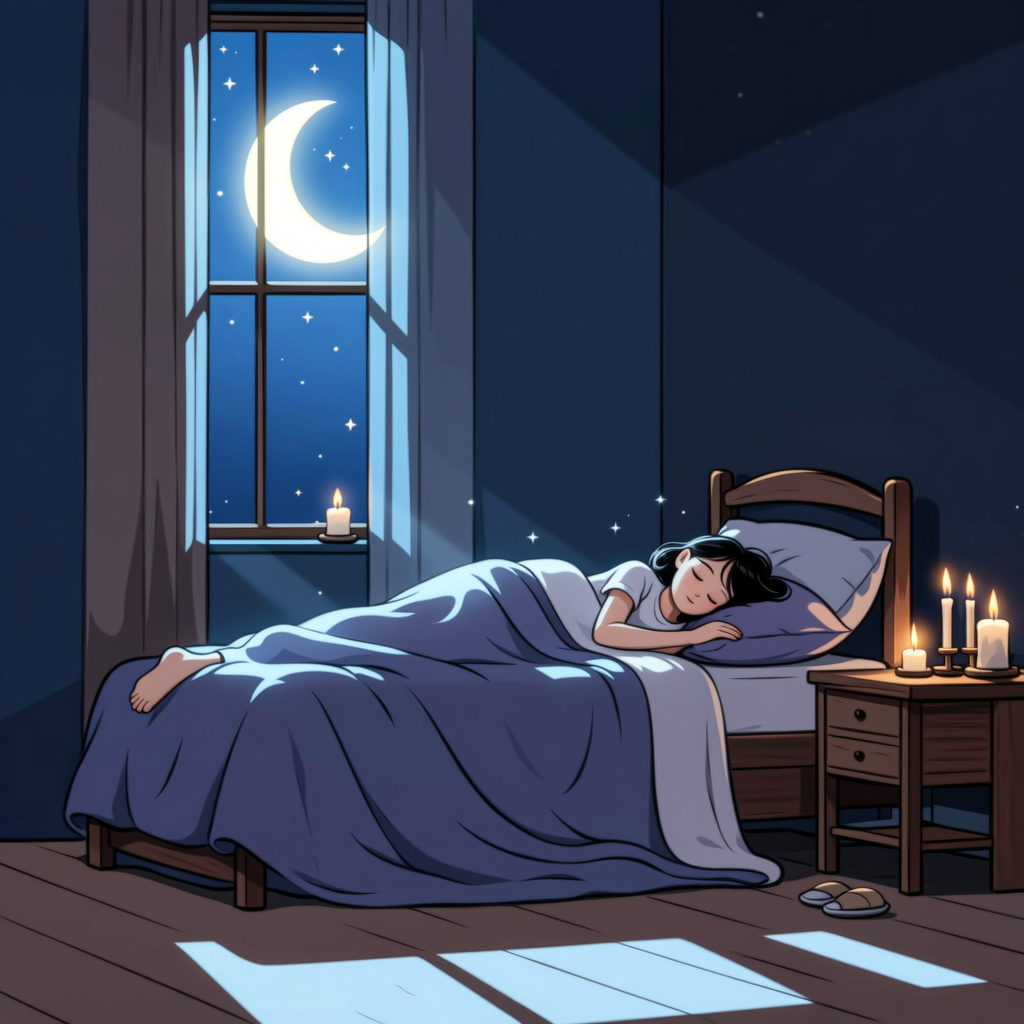Can You Really Fall Asleep in 5 Minutes?
Falling asleep quickly isn't just a dream—it's a skill you can learn. While the average person takes 10-20 minutes to fall asleep, with the right techniques, you can train your body to drift off in just 5 minutes or less. These methods are backed by sleep science and used by everyone from military personnel to sleep specialists.
Today, we'll explore the most effective techniques that can help you fall asleep fast, including the famous 4-7-8 breathing method, progressive muscle relaxation, and the military sleep technique.
The 4-7-8 Breathing Method
The 4-7-8 breathing technique, developed by Dr. Andrew Weil, is one of the most effective methods for falling asleep quickly. This simple breathing exercise activates the parasympathetic nervous system, promoting relaxation and reducing anxiety.
How to Do It:
- Find a comfortable position in bed, either on your back or side
- Place the tip of your tongue against the ridge behind your upper front teeth
- Inhale quietly through your nose for 4 seconds
- Hold your breath for 7 seconds
- Exhale completely through your mouth for 8 seconds, making a whoosh sound
- Repeat this cycle 3-4 times
Why it works: This breathing pattern slows your heart rate, lowers blood pressure, and signals to your brain that it's time to sleep.
Progressive Muscle Relaxation
This technique involves systematically tensing and relaxing different muscle groups, releasing physical tension that might be keeping you awake.
Step-by-Step Guide:
- Start with your toes - tense them for 5 seconds, then relax
- Move to your feet - curl your toes, hold, then release
- Work up your legs - tense calf muscles, thighs, then relax
- Focus on your hands - make fists, hold, then release
- Tense your arms - biceps and triceps, then relax
- Shoulders and neck - shrug up towards ears, hold, release
- Face muscles - scrunch up face, hold, then relax completely
Take deep breaths between each muscle group and notice the contrast between tension and relaxation.
The Military Sleep Method
This technique was reportedly developed by the US military to help soldiers fall asleep quickly in challenging conditions. It combines relaxation, visualization, and breathing.
The Process:
- Relax your face - release tension in jaw, eyes, and forehead
- Drop shoulders - let them fall away from your ears
- Relax arms - starting from shoulders to fingertips
- Breathe out - releasing chest tension
- Relax legs - thighs, calves, down to toes
- Clear your mind for 10 seconds by visualizing a calm scene
- Repeat "don't think" if thoughts intrude
Studies show this method has a 96% success rate after 6 weeks of practice.
Powerful Visualization
Your mind plays a crucial role in falling asleep. Visualization techniques help redirect racing thoughts into calming imagery.
Effective Visualization Methods:
- Peaceful scene - imagine a calm beach, forest, or mountain landscape
- Memory palace - mentally walk through a familiar, peaceful place
- Color breathing - imagine inhaling calming blue light, exhaling stress as gray smoke
- Floatation - visualize yourself floating on a cloud or in calm water
Engage all your senses in the visualization—what do you see, hear, smell, and feel in your peaceful scene?
The 10-3-2-1-0 Sleep Rule
This simple rule helps prepare your body and mind for sleep throughout the day:
- 10 hours before bed - No caffeine
- 3 hours before bed - No food or alcohol
- 2 hours before bed - No work
- 1 hour before bed - No screens (blue light)
- 0 - Number of times you hit snooze in the morning
Following this rule consistently can significantly improve your sleep quality and help you fall asleep faster.
Optimize Your Sleep Environment
Your environment plays a crucial role in how quickly you fall asleep:
Temperature:
The ideal bedroom temperature is between 60-67°F (15-19°C). A cool room helps signal your body that it's time to sleep.
Light and Sound:
- Keep your bedroom completely dark or use a sleep mask
- Use white noise or earplugs if noise is an issue
- Remove electronic devices or turn them face down
Comfort:
Invest in a comfortable mattress and pillows. Your sleeping position matters too—sleep on your back or side for optimal breathing and spinal alignment.
When to Seek Professional Help
While these techniques work for most people, chronic insomnia may require medical attention. Consult a healthcare provider if:
- You consistently take more than 30 minutes to fall asleep
- You wake up frequently during the night
- You feel tired despite getting enough sleep
- Sleep problems affect your daily functioning
- You've tried these techniques for several weeks without improvement
Putting It All Together
Falling asleep in 5 minutes is achievable with practice and consistency. Start with one technique that resonates with you—many people find the 4-7-8 breathing method easiest to learn first.
Remember that these techniques work best when combined with good sleep hygiene and a consistent sleep schedule. Be patient with yourself as you learn these new skills.
For best results, practice these techniques during the day when you're not trying to sleep, so they become second nature when you need them most.
Sweet dreams and restful sleep await!
Ready to Transform Your Sleep?
Download the RuJing app for guided sleep meditations, breathing exercises, and personalized sleep recommendations.
Download RuJing App